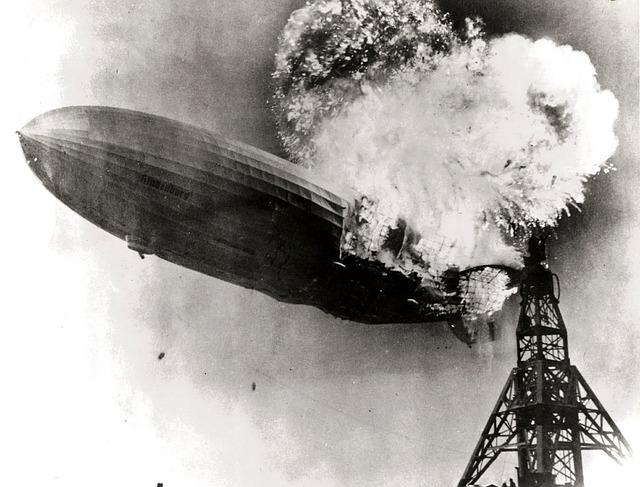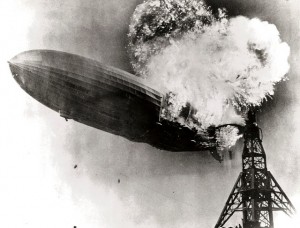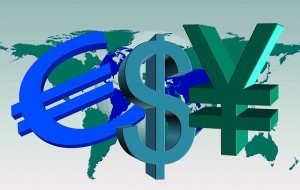 Something has just happened that has signaled a recession every single time that it has occurred since World War I. 16 times since 1919 there have been at least 8 month-over-month declines in industrial production during the preceding 12 month period, and in each of those 16 instances the U.S. economy has plunged into recession. Now that it has happened again, will the U.S. economy beat the odds and avoid a major economic downturn? I certainly wouldn’t count on it. As I have written about repeatedly, there are a whole host of other numbers that are screaming that a new recession is here, and global financial markets are crumbling. It would take a miracle of epic proportions to pull us out of this tailspin, and yet there are many people out there that are absolutely convinced that it will happen.
Something has just happened that has signaled a recession every single time that it has occurred since World War I. 16 times since 1919 there have been at least 8 month-over-month declines in industrial production during the preceding 12 month period, and in each of those 16 instances the U.S. economy has plunged into recession. Now that it has happened again, will the U.S. economy beat the odds and avoid a major economic downturn? I certainly wouldn’t count on it. As I have written about repeatedly, there are a whole host of other numbers that are screaming that a new recession is here, and global financial markets are crumbling. It would take a miracle of epic proportions to pull us out of this tailspin, and yet there are many people out there that are absolutely convinced that it will happen.
John Hussman is not one of them. In his most recent weekly comment, he examined this stunning correlation between month-over-month declines in industrial production and recessions. To me, what Hussman has presented is overwhelmingly conclusive…
Last week, following a long period of poor internals and weakening order surplus, we observed fresh declines in industrial production and retail sales. Industrial production has now also declined on a year-over-year basis. The weakness we presently observe is strongly associated with recession. The chart below (h/t Jeff Wilson) plots the cumulative number of month-over-month declines in Industrial Production during the preceding 12-month period, in data since 1919. Recessions are shaded. The current total of 10 (of a possible 12) month-over-month declines in Industrial Production has never been observed except in the context of a U.S. recession. Historically, as Dick Van Patten would say, eight is enough.
After looking at that chart, is there anyone out there that still doubts that the U.S. economy is in significant trouble?
Many estimates of U.S. GDP growth for the fourth quarter of 2015 are already just a small fraction of one percent. It would not be a surprise at all to see a negative number posted once it is all said and done.
And of course more bad news for the economy just keeps pouring in. So far this week we have learned that the growth rate of federal withholding taxes has turned negative, Johnson & Johnson plans has announced that it is eliminating 3,000 jobs, and BP has announced that it is eliminating 4,000 jobs.
Of course it is not exactly a surprise that BP is cutting jobs. At this point the entire energy industry is absolutely hemorrhaging workers. As I wrote about yesterday, 130,000 good paying energy jobs have been lost in the United States since the beginning of last year.
But now we are seeing major firms outside the energy industry cutting payrolls. Even financial giants such as Morgan Stanley are looking for ways to cut costs…
Morgan Stanley just announced fourth-quarter earnings, and it is providing detail to investors on a cost-saving plan called Project Streamline.
During a conference call, CEO James Gorman uttered a sentence that will most likely make the bank’s staff shudder.
“Too many employees based in high-cost centers are doing work that can sensibly be done in lower-cost centers,” he said.
The whole environment is changing.
When things start to get tough, big corporations start to get rid of people. We saw this back in 2008, and it is starting to happen again right now.
And just like last time around, we are going to see millions of Americans lose their jobs during the hard years that are ahead of us.
But thankfully for the moment there is a brief lull in the action. The financial turmoil that has gripped the planet was calmed on Tuesday when China announced that their economy grew at a rate of 6.8 percent during the fourth quarter of 2015. This was right in line with expectations, and markets around the world responded positively to the news.
There is just one huge problem. Everyone knows that GDP figures coming out of China are essentially meaningless. If you believe that the Chinese economy actually grew at a 6.8 percent rate during the fourth quarter of 2015, then I have a bridge to sell you. Virtually every other number coming out of China over the past several months tells us that the Chinese economy is shrinking, and so that 6.8 percent figure is extremely questionable at best.
Do you want to know the last time the communist Chinese admitted to having a recession?
It was in 1976.
Over the past four decades, economic growth figures have become a source of great national pride for China. To admit that the economy is now imploding would bring great shame on the Chinese government and the nation as a whole, and so that must be avoided at all costs.
Yes, the numbers are fraudulent in the U.S. too. According to John Williams of shadowstats.com, if the U.S. was actually using honest numbers the last recession never would have technically ended.
But in China they take this to ridiculous extremes. The Chinese economy is fueled by exports, and Chinese exports have been down on a year over year basis for six months in a row. And the primary reason why commodity prices have been absolutely collapsing is because of the economic contraction in China.
Of course if China had released a GDP number that was honest, global markets would have crashed hard. So their lies are making everyone else feel a bit better for the moment, and every day of relative stability that we can enjoy from here on out is something to be thankful for.
As you read this article, markets all over Asia, Europe, South America and the Middle East are already in bear market territory. More than 30 percent of the market has been wiped out in Brazil and Hong Kong, more than 40 percent of the market has been wiped out in China and Italy, and about 50 percent of the market has been wiped out in Saudi Arabia.
We are already experiencing a major global financial crisis.
The only question remaining is how bad it will eventually become.
Let us hope for more days like this one that are relatively calm. But I wouldn’t count on things turning around significantly any time soon, because the economic fundamentals are telling us that big trouble is ahead.













